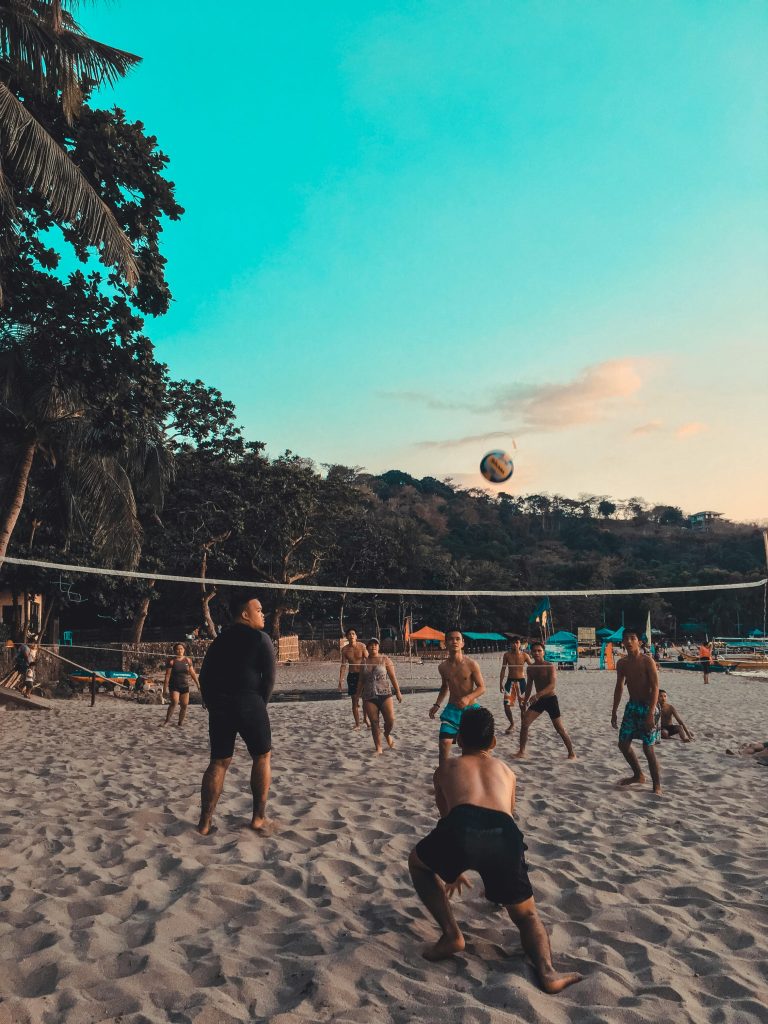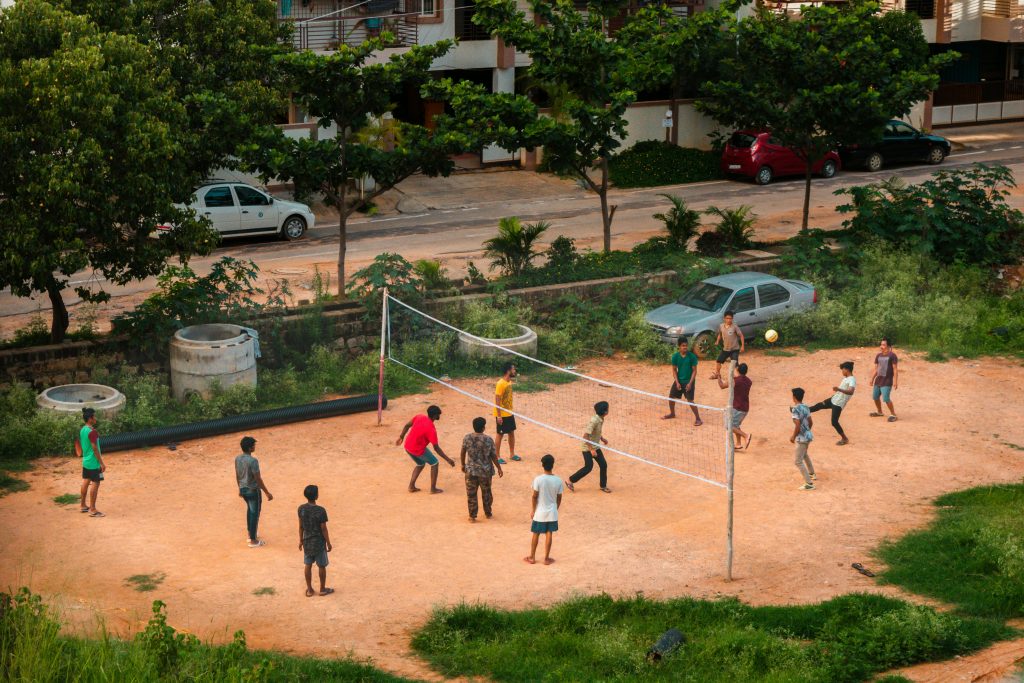
Learn and explore volleyball tips and tricks to help you improve your game, whether you are a beginner or an experienced player. Learn how to improve your,
- Serves and
- Teamwork
From basic skills to advanced methods, this guide will help you improve your volleyball experience and performance. Let us get into the factors that make a difference.
Tryout Tips for Volleyball
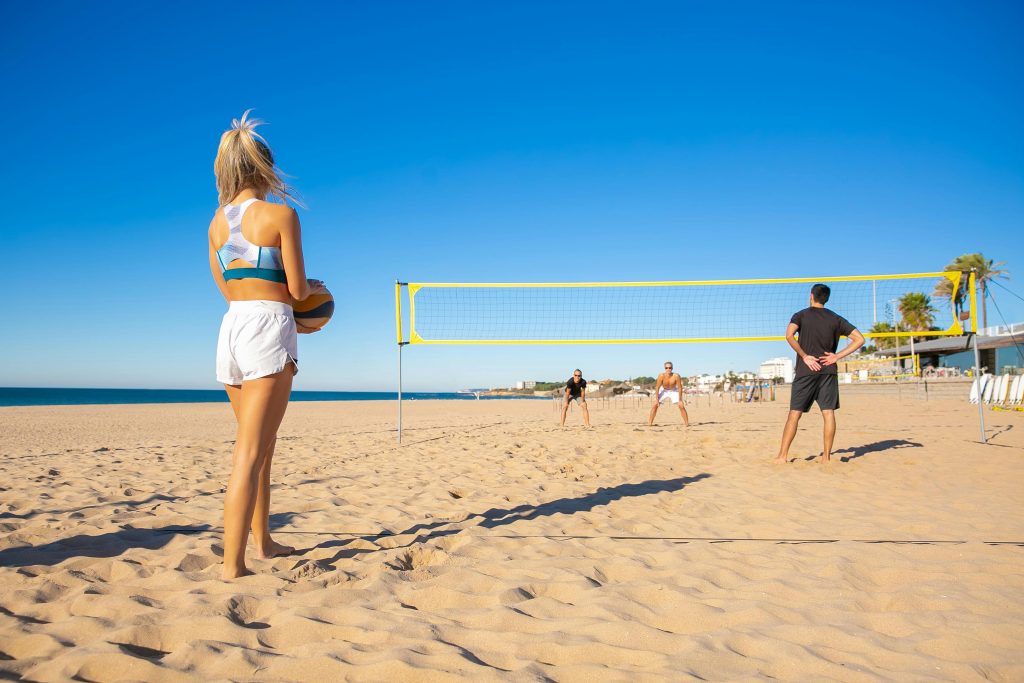
Strength and stamina
- Cardio Routines: Include long-distance running and interval sprints in your exercise routine. This increases strength, in order to keep up your energy levels during the races.
- Strength Training: To increase jumping power, concentrate on leg workouts like lunges and knees. Planks and other core workouts improve stability for improved mobility and balance.
Acquiring Fundamental Knowledge
- Serving: To show versatility, practice a variety of serves, such as jumps and floaters. Your consistency will get the coach’s attention.
- Passing and Setting: Practice exact, which is fast sets as well as controlled passing to the setter’s position. To practice your touch and mimic game conditions, use a wall or a partner.
Accurate Footwork
- Lateral Movements: To be prepared for any direction the ball may go, practice shuffles from side to side. Steps that are quick and low guarantee that you stay in place.
- Transition Speed: Show off your flexibility during play by switching between the court’s positions rapidly, from defence to offence.
Proficiency in Communication
- Calling the Ball: When you are heading for the ball, call it out loud and loudly. This demonstrates confidence and leadership.
- Encouragement of Teammates: Even during tryouts, provide your teammates verbal support. Players that boost team spirit are sought after by coaches.
Intelligence in games
- Reading the Opponent: Recognise your opponent’s posture and body language to predict their next move. This demonstrates your alertness and strategic thinking on the court.
- Making Decisions Quickly: React fast to unforeseen events, including serves that come out of nowhere or passes that go off target. Being adaptable is a good quality.
Attitude and Body Language
- Confidence: Throughout the tryouts, keep a solid, assured stance. Players having confidence in themselves catch the attention of coaches.
- Coachability: Be receptive to criticism and demonstrate growth in response to recommendations. This quality is essential for growth and cohesive teamwork.
Practice simulating games
- Scrimmage Often: Play as many practice games as you can. You may use your talents under pressure and adjust to various playing styles with the aid of simulated game circumstances.
- See and Take Notes: Examine videos of previous tryouts or professional games. Examine the motions, tactics and high-pressure scenarios that players employ.
Beach Volleyball Tips
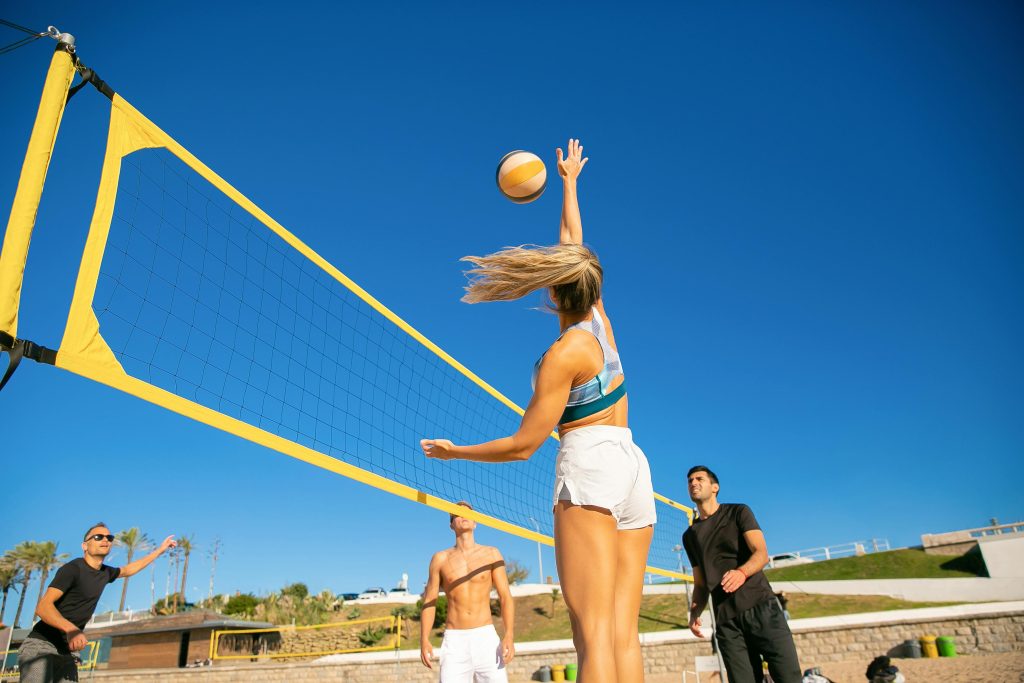
Beach volleyball is a distinct and hard sport that needs a combination of,
- Talent,
- Strategy and
- Adaptation.
Here’s a more extensive look at some important ideas for improving your beach volleyball game.
Understanding The Environment
- Adapt to the Sand: Unlike indoor volleyball, beach volleyball is played on sand, which restricts your movements. To retain balance and speed, practice moving fast and efficiently on the sand.
- Wind Awareness: The wind can be an important aspect in beach volleyball. Learn to modify your serves and shots based on the wind direction and speed.
Techniques & Strategies
- Master the Float Serve: A float serve works especially well on the beach, where the wind and sand make it more difficult to predict and control.
- Communicate Constantly: With only two players on each team, clear and consistent communication is essential for covering the court and carrying out plays.
- Focus on ball control: Precision in passing, setting and striking is critical. Practice retaining control of the ball, especially while dealing with unpredictable sand and wind conditions.
Physical Conditioning
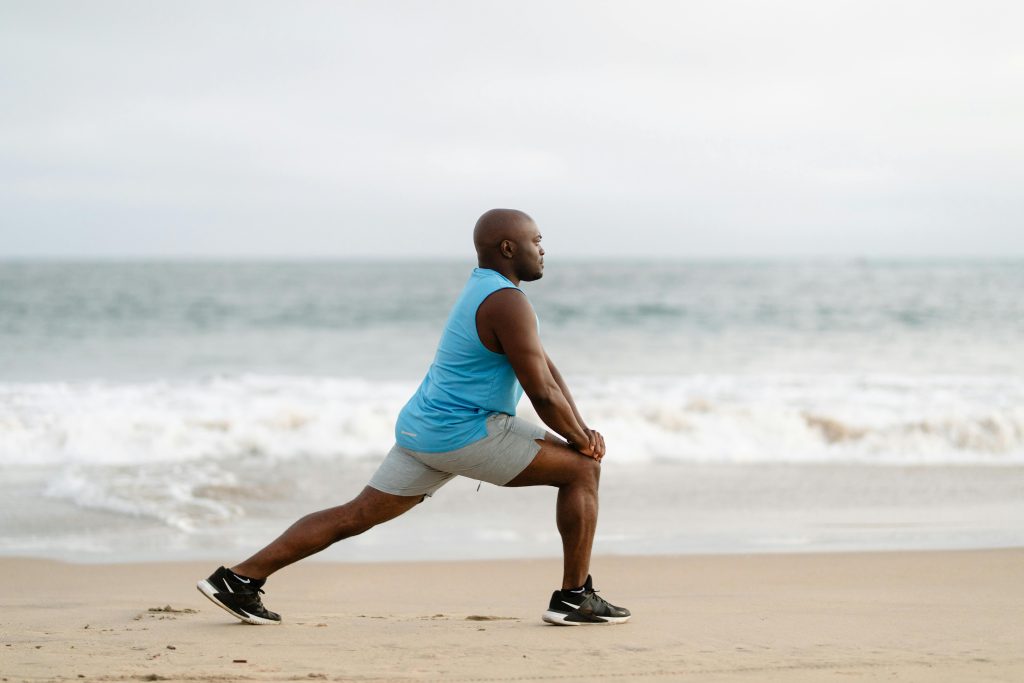
- Build Durability: Beach volleyball requires more physical effort than indoor volleyball. Incorporate endurance training into your regimen to guarantee you can perform well during the contest.
- Strengthen Core Muscles: Having strong core muscles will help you stay balanced and stable on the beach. Concentrate on exercises that work your abdomen, lower back and hips.
Game Awareness
- Read your opponent: Consider your opponent’s weaknesses, such as how they move on the sand or how they deal with wind. Use this information to your advantage.
- Strategic Positioning: Learn how to strategically position yourself to cover the court and anticipate your opponent’s actions. Efficient positioning can save energy while improving your team’s defence.
These suggestions can help you become a more talented and strategic beach volleyball player, allowing you to enjoy the game while performing to your full potential.
Volleyball Setting Tips
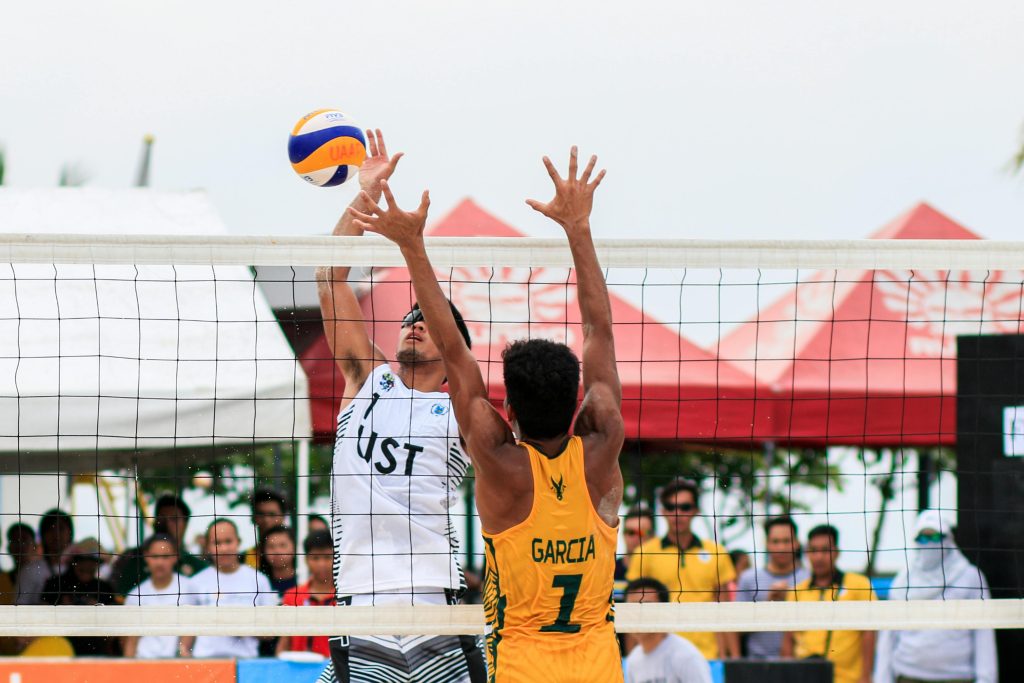
Building the skill of setting in volleyball is essential for organising good plays and ensuring that your teammates can launch powerful attacks.
Here are some great suggestions for improving your setup skills:
- Hand Positioning: Hold your hands in a triangle shape, fingers spread wide. For improved control, make contact with the ball with your fingertips.
- Body Alignment: Face the target, square your shoulders and place your feet shoulder width apart. This alignment maintains precision and consistency.
- Soft Touch: When setup, use a gentle and controlled touch. This enables for more accurate ball placement and makes it easier for batters to attack.
- Quick Release: Release the ball quickly and smoothly, aiming for a high arc to allow your hitter to approach.
- Vision and Communication: Always keep an eye on your hitters and speak with them to ensure that the setup satisfies their requirements.
Implement these methods to improve your setting and become a great player on the court.
Volleyball Coaching Tips

Effective volleyball coaching is about more than just teaching methods. It is about building a strong team and encouraging individual progress. Here are some important coaching tips:
- Focus on Fundamentals: Begin with the fundamentals: a) Accurate footwork, b) Passing, c) Setting, and d) Serving. These are the fundamentals of any great player.
- Encourage Communication: Encourage open communication on the court. Players should continually communicate with one another, calling the ball and helping teammates.
- Conditioning and Strength: Conditioning and strength training should be done on a regular basis to improve quality and lower the chance of injury.
- Game-Like Drills: Use drills that simulate real-game scenarios, allowing players to practice in an authentic setting.
- Positive Reinforcement: Positive reinforcement involves recognising players progress and providing helpful feedback.
- Establish Clear Goals: Define individual and team objectives to keep players motivated and engaged.
- Adaptability: Use a flexible coaching style, tailoring techniques to your team’s strengths and weaknesses.
Implementing these suggestions can result in a more productive and united volleyball team.
Tips on Serving a Volleyball
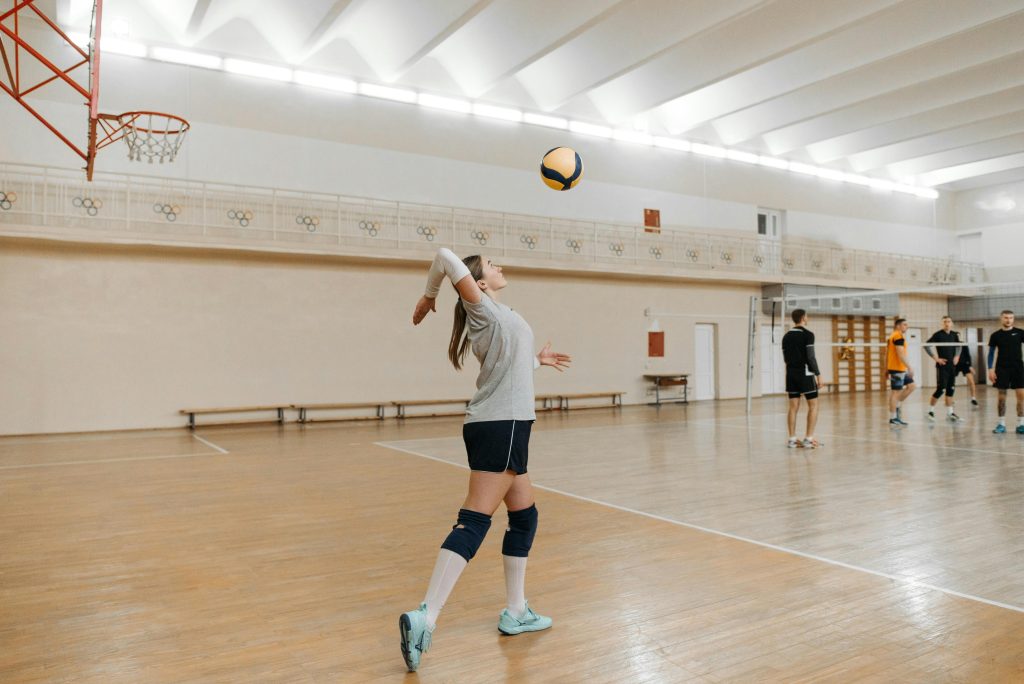
Serving is an essential component in volleyball, setting the tone for each rally. Here are some pointers for improving your serving technique:
- Master the Grip: Hold the ball firmly but comfortably in your non-dominant hand and make sure your dominant hand is ready to strike with precision.
- Focus on Foot Placement: For improved balance and control, keep your feet shoulder-width apart and your torso slightly tilted towards the net.
- Consistent Toss: Maintain precision and power by tossing consistently, slightly in front of you.
- Snap Your Wrist: A hard wrist snap at the point of contact gives the ball spin and power, making it difficult for the opponent to catch.
- Follow Through: Use a clean follow-through, directing your arm towards the target to guide the ball’s trajectory.
- Practice Different Serves: Experiment with float, topspin and jump serves to keep your opponents guessing and improve your overall adaptability on the court.
FAQs
What Level is Competitive Volleyball?
Competitive volleyball often covers from high school and club levels to collegiate and professional leagues. Each level necessitates various levels of skill, strategy and fitness.
When Does Volleyball Season Start?
Volleyball season often begins in late summer or early autumn, depending on the level of competition and region. High school and college seasons usually start in August or September.
How Long is Volleyball Season?
The volleyball season typically lasts two to three months, with the regular season followed by playoffs and finals. The actual duration varies according on league and level.
How are Club Volleyball Nets Made?
Club volleyball nets are constructed of high-quality nylon or polyester mesh and supported by steel cables or strong ropes. They are built to be tough and handle rough play.
How Long is a Volleyball Match?
A volleyball match typically lasts between 60 to 90 minutes, depending on the number of sets played. Matches are usually best of five sets.
How High is a Guys Volleyball Net?
The standard height of a men’s volleyball net is 7 feet, 11 5/8 inches (2.43 metres). This height remains stable across most competitive levels.
What is a 6-1 in Volleyball?
A 6-1 formation is actually a misinterpretation. The common setup is a 6-2 or 5-1 formation. In a 6-2, there are two setters, while in a 5-1, there is one setter with six players on the court.
What is a Pin in Volleyball?
The “pin” in volleyball refers to the antennae on the net that form the court’s vertical barrier. It also refers to outer and right-side hitters, who frequently attack around the flagpole.
How Tall is a Volleyball net?
A standard volleyball net height for men is 7 feet, 11 5/8 inches (2.43 meters) and for women. It is 7 feet, 4 1/8 inches (2.24 meters).
How Long is a Volleyball Game?
A standard volleyball net height for men is 7 feet, 11 5/8 inches (2.43 meters) and for women. It is 7 feet, 4 1/8 inches (2.24 meters).
What Equipment Do you Need for Volleyball?
A ball, net, knee pads and appropriate footwear are all necessary volleyball equipment. Depending on the level of play, additional equipment such as ankle supports and arm sleeves may be required.
What is a Red Card in Volleyball?
A red card in volleyball suggests a significant offence and the opposing team receives a point and serve. It could end in a player’s dismissal from the contest.
What is a Yellow Card in Volleyball?
A yellow card in volleyball is used as a warning for unsportsmanlike behaviour. Unlike a red card, this does not result in an immediate punishment.
What Season is Volleyball?
Volleyball is typically a fall sport at schools, although it can also be played year-round in clubs and beach volleyball circuits. Indoor volleyball is frequently played during the winter and spring seasons.
How Tall is a Women’s Volleyball Net?
The standard height for a women’s volleyball net is 7 feet, 4 1/8 inches (2.24 meters). This height is used in both professional and amateur competitions.
What are the Positions in Volleyball?
The main positions in volleyball are,
- Setter
- Outside hitter
- Opposite hitter
- Middle blocker
- Libero and
- Defensive specialist.
Each position has specific roles and responsibilities on the court.

